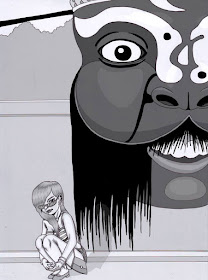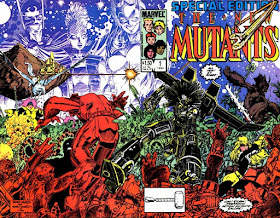
The Moomins are coming! One of Finland’s strongest export (way before Angry Birds) and loved over the years by children and adults of all ages, these classic characters will be featured in two Singapore Writers Fest programmes:
https://www.singaporewritersfestival.com/nacswf/nacswf/programme-listing/festival-events/The-Enduring-Allure-of-the-Moomins-.html
https://www.singaporewritersfestival.com/nacswf/nacswf/programme-listing/free-events/Tales-from-Moominvalley.html
A life size Moomin troll will be making its appearance too at the Moomin storytelling by Paula Parviainen, Ambassador of the Embassy of Finland in Singapore.

Sophia Jansson, the niece of Moomins creator Tove Jansson, and the current Chairman of the Board and Creative Director at Moomin Characters Ltd, and Roleff Kråkström, the managing director of Moomin Characters Ltd, will be in town for Finland 100, a celebration of Finland’s 100 years of independence.
I had a short chat with Roleff over the phone about Tove Jansson (1914 – 2001) and her beloved Moomins. Like other Finns I have met in Helsinki and in Singapore, Roleff’s response can be rather reserved. But you can still hear his passion for the Moomins in his voice when I called him in Helsinki on a Friday evening.

What is your first memory of the Moomins?
My first memory of the Moomins was my parents reading the books to me when I was a small child. I was 3 or 4 then. I was very young at that time so I don’t have a very clear memory. But it has become a very safe and comfortable memory for me since then – this image of being read aloud by my parents.
Later, I work with the publisher of the Moomins. I have a very long common history with the Moomins.
How did this long association with the Moomins come about?
I started working for WSOY, the Finnish publisher of the Moomin books in Helsinki. That was back in 1992 or 1993.

I did meet Tove once at the publishing company dinner. She didn’t know me then. I was just a junior staff member. But my impression of her was that she was very kind and a very small woman in size. She was a petite person.
Is this your dream job?
I have worked very long in the publishing company and I am an extremely lucky person so far to only have worked with things I am passionate about.
So yes, you can say that it is a dream job.
In your opinion, what is the appeal of the Moomins? What accounts for its longevity?
What sets the Moomins apart from other licences in the industry is that we are not a manufactured entertainment company like those for anime series. The Moomins have always been about the art and the universal values it embodies. So the stories are about love, courage, tolerance, respect for nature and family. Thus they have been able to travel over time and culture as compared to other properties in the manufactured entertainment industry. For the entertainment industry, it is a default setting to always replace the old characters with new ones. There is always a target audience for them, which is the antithesis of the universal.
For me, the aesthetics of the Moomins is a combination of being brave and respecting your fellow person and surroundings. Often, freedom and bravery lead to arrogance. But in Tove’s stories, the main character solve the dilemma by being brave and also respecting everyone at the same time. It’s not me, myself and I, but by doing and solving things together.
This is very different for the US where you have individualistic superheroes. You can even take it a notch down and look at the children literature. The protagonist’s family gets killed. There is a war and horrible things happen. But basically the protagonist makes it on his or her own.
The Moomins solve things as a family. The character gets into a dilemma. He takes off and have an adventure. He finds something. But the family always come together. He is never alone. The family will always come looking for you just like in the first Moomin book, The Moomins and the Great Flood (1945).

What explains the success of the Moomins in Asian countries like Japan and China? In China, there has been a 300% increase for the retail value of the Moomin brand.
For our Asian success, the reasons are different for Japan and China. In Japan, it is the Moomin aesthetics which is very clear and the artwork is appealing to the Japanese. Tove was influenced by the Japanese masters like Hokusai in terms of the composition and dynamics, so the connection is there.
But at a deeper level, Finnish and Japanese societies are similar in the sense that the infrastructure of both countries were almost completely destroyed after the war. The old way of life was gone and urban society took over. The Moomins resembled the values of the village way of life in Japan and Finland that was dominant only two generations away in the early 20th century. So the stories bridge today’s society and values with the beginning of the 20th century. There lies the appeal and popularity of the Moomins in Japan.
In China, it is different. After years of rapid economic growth and urbanization, the people are in a state of immense wealth. The Moomin stories focused on values and they could possibly serve as a roadmap for happiness.
Moomin Characters and Bulls Press, who does the licencing for the Moomin brand, have formed a new literary rights and brand licencing agency, Rights & Brands, to expand Nordic properties worldwide. How is that doing?
Thanks for asking about that. Rights & Brand has been in business for slightly over a year and we are the biggest brand agency in the Nordic region. We work with over 50 properties and our turnover has doubled in the first year.

We only represent literary properties that represent our values. There must be a value proposition in terms of art, design and they are handcrafted. It is not entertainment.
There is demand for such values anchored properties. We do not want to offer the same things that everyone already has.
It sounds like your properties have a very strong hipster appeal. Has there been any backlash?
It might be but then again our characters, our brands and our legacy are what they are. We do not allow ourselves to tweak it to a mass market product. They have to be true to what they are. We do not alter them.
Sophia Jansson has said that the Moomins have always been like a family business. What is it like for you to join the family and join the family business?
Sophia and I are friends when I joined the company. Now we are married. It was a natural progression. Today I feel very much part of the family where before I was a hired executive.
The Moomin stories are a body of art created by Tove. We manage it and we are committed to it. I am happy that all five of our children work in the group or with companies that we are associates with.
Have there been many offers wanting to buy the Moomin brand?
During my time here, I have only received one direct offer to buy the Moomins, so it is impoosilbe for me to assess how serious it was. It is a very valuable brand and now it is more clearly defined. Rights wise, it is a much tighter package than before.
Are you looking forward to your visit to Singapore?
Yes, this will be our first time to Singapore. We have visited Thailand many times but we have not been to Singapore or Indonesia before.

I didn’t get the chance to talk to Sophia Jansson, but I asked the Moomin trolls for a quote from her. Here’s what she shared:
“My earliest memories of Tove are from our mutual summers together in the Finnish archipelago. They are memories of the family being together, going on picnics, swimming, or other similar activities you do in the summer. Tove was always a warm and welcoming person and never made me feel inferior or like a child that was in the way.”
Thanks to Paula Parviainen, Marina Kelahaara, Laura Karttunen and others in the Finland 100 team for their assistance.
All images: © Moomin Characters™







































